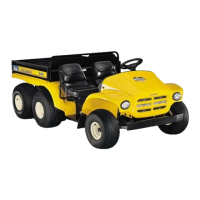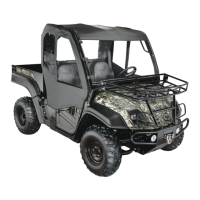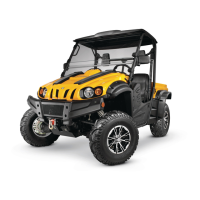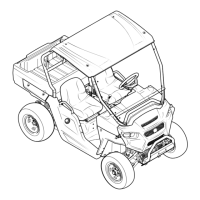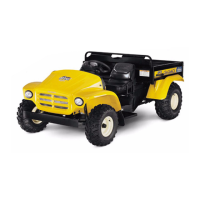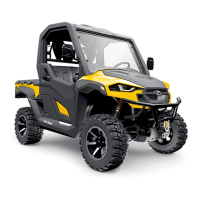Chapter 8 - Caterpillar Engine and Related Systems
264
• The cylinder or cylinders having poor combus-
tion can be identified by checking the tempera-
ture of the individual exhaust runners using a
non-contact thermometer.
• Look primarily for evenness of temperatures
between the exhaust runners.
• If a mis-firing cylinder is identified, contact the
partnering Caterpillar dealer.
6. If the cooling system pressurizes immediately on
start-up, the cooling system has been breached
by engine compression. This is typical of a head-
gasket, cylinder liner, or cylinder head failure.
Contact the partnering Caterpillar dealer.
ENGINE REMOVAL
CAUTION: Allow the engine to cool before start-
ing work on it. Hot engine parts, a hot exhaust
system, and hot fluids contained in the engine
can all cause serious burns.
1. Remove the cargo box from the vehicle:
See Figure 8.120.
• Lift and support the cargo box.
• Pry-off the retainer that holds the lift assist cylin-
der to the cargo box.
• Carefully lower the cargo box. Use a length of
2X4 dimensional lumber to block the latch that
normally secures the cargo box in the down
position.
• Remove the nuts and bolts that secure the cargo
box to the frame using a pair of 9/16” wrenches.
• With the help of an assistant or a mechanical lift-
ing device, slide the cargo box off the back of the
frame and remove it from the vehicle.
2. Disconnect the battery
2a. Tilt-up the driver’s seat
2b. Release the Camloc® fasteners that
secure the parcel bin under the seat, and
remove the bin.
2c. Disconnect the ground cable from the neg-
ative terminal on the battery using a
10mm wrench.
3. Release the Camloc® fasteners that secure the
engine cover and remove the engine cover.
Figure 8.120
Remove clip
to disconnect
lift cylinder
Hinge bolt
(1 per side)

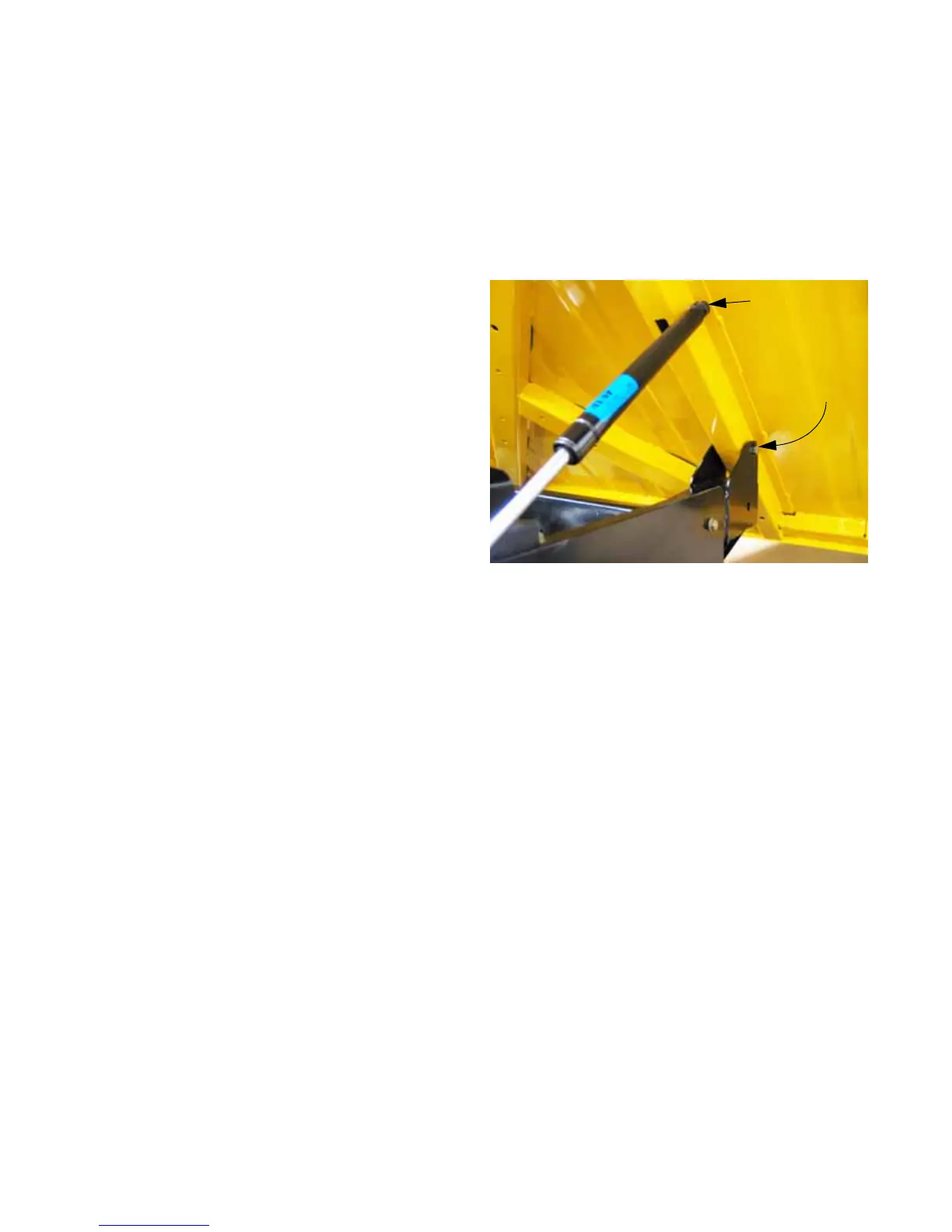